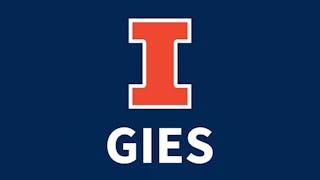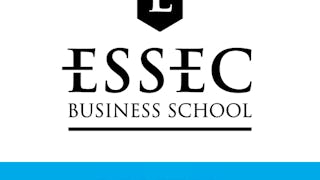Welcome to the Introduction to Decision Science for Marketing course! This course will introduce the principles and methods of data analytics as they apply to marketing. You will learn how and why to use data and analytics to inform marketing decisions and strategies.


Introduction to Decision Science for Marketing
This course is part of Machine Learning for Marketing Specialization

Instructor: Prof. Lalit Pankaj
Included with
Recommended experience
What you'll learn
Demonstrate a solid understanding of the decision-making process through data analytics.
Visualize and imagine the application of data analytics techniques to real-world marketing problems.
Explain how marketing analytics and decision science approaches for marketing can enhance the quality of marketing decision-making.
Skills you'll gain
Details to know

Add to your LinkedIn profile
36 assignments
See how employees at top companies are mastering in-demand skills

Build your subject-matter expertise
- Learn new concepts from industry experts
- Gain a foundational understanding of a subject or tool
- Develop job-relevant skills with hands-on projects
- Earn a shareable career certificate

There are 15 modules in this course
Decision science or data analytics for marketing (predictive marketing) are new approaches to customer relationships, using big data and machine learning techniques. It is a critical opportunity for marketers and is still in the early stages of adoption. In this module, you will learn why and how companies of all sizes adopt decision science. The early adopters have seen great value in it, and new technologies make it easy to implement.
What's included
6 videos5 readings4 assignments
In this module, you will learn that building complete and accurate customer profiles is difficult but valuable. Predictive technology can help clean up data and connect online and offline information to resolve customer identities. Having all customer data in one place and making it accessible to customer-facing personnel improves the customer experience. Optimizing customer lifetime value is the best way to optimize enterprise value and manage customers. This is similar to managing a stock portfolio, taking different actions for new and long-term customers, and adjusting budgets for profitable and unprofitable customers.
What's included
4 videos4 readings4 assignments1 discussion prompt
This assessment is a graded quiz based on the modules covered this week.
What's included
1 assignment
In this module, you will examine the stages of a customer’s journey with a company, including acquiring new customers, fostering their growth, and retaining them. You will also explore how a company’s engagement strategy should adapt at each stage of the customer life cycle. The key to maximizing the value from customers is by building trust by providing value to the customer.
What's included
3 videos3 readings3 assignments
In this module, you will learn about value-based marketing, where businesses segment and target customers based on their lifetime value. High-value customers are prioritized by investing more money in retaining and appreciating them, while medium-value customers are upsold to increase their value. Low-value or unprofitable customers are not invested in as much. The module also discusses predictive analytics, specifically models that predict a customer’s likelihood to buy, in both consumer and business marketing. These models can optimize the time and efforts of sales and customer success teams in business marketing and help consumer marketers optimize their discount strategy and email frequency.
What's included
3 videos3 readings3 assignments
This module provides marketers with a primer on personalized recommendations, discussing different types, such as those made at the time of purchase and those tied to specific products or customer profiles. It also highlights potential issues and the importance of merchandising rules, omnichannel orchestration, and giving customers control when making personal recommendations.
What's included
2 videos2 readings2 assignments1 discussion prompt
This assessment is a graded quiz based on the modules covered this week.
What's included
1 assignment
By using predictive marketing techniques, marketers should focus on allocating budgets to the right people rather than the right products or channels. This includes using clustering to discover personas or communities in the customer base and gain insight into their needs, behaviors, demographics, attitudes, and preferences. This can help differentiate and optimize marketing actions and product strategies for different groups of customers, which can lead to more cost-effective growth. This module also covers three predictive marketing strategies for acquiring more and better customers: personas, remarketing, and look-alike targeting. Remarketing is used to differentiate between customers who are likely to return and those who need an incentive. Look-alike targeting on platforms like Facebook helps find new customers similar to existing ones.
What's included
3 videos3 readings3 assignments
This module covers strategies for retaining customers by nurturing the relationship from the day of acquisition. It discusses various predictive marketing strategies to grow customer value, including post-purchase campaigns, replenishment campaigns, repeat purchase programs, new product introductions, and customer appreciation campaigns. It also covers loyalty programs and omnichannel marketing in the age of predictive analytics.
What's included
3 videos3 readings3 assignments
The module focuses on the retention of customers in order to avoid losing money. It is important to understand that not all churn is the same;, losing an unprofitable customer is less impactful than losing a valuable one. Preventing a customer from leaving is more efficient and cost-effective than trying to reactivate them. The chapter covers different churn management programs, from untargeted to targeted, and covers proactive retention management and customer reactivation campaigns.
What's included
2 videos2 readings2 assignments1 discussion prompt
This assessment is a graded quiz based on the modules covered this week.
What's included
1 assignment
The module discusses the use of predictive marketing techniques. This requires both a change in mindset to focus on individual customers and their context, as well as technical capabilities in customer data integration, predictive intelligence, and campaign automation.
What's included
2 videos2 readings2 assignments
The current era is both exhilarating and perplexing due to the abundance of new marketing technologies emerging annually. This module provides a general understanding of the different commercial technologies available and the steps necessary to create a predictive marketing solution internally from scratch.
What's included
3 videos3 readings3 assignments
This module highlights a significant career opportunity for early adopters of new technologies and methodologies, such as predictive marketing and analytics. Business understanding is more important than math skills, and asking the right questions is the key. Consumers are willing to share preference information in exchange for benefits from personalized products and services. It is important to use common sense and consider the context of the situation when using customer data to ensure trust. Predictive analytics will continue to find new applications and real-time customer insights will shape the physical world. There are benefits for early adopters of predictive marketing for both customers and companies, and adopting a predictive marketing mindset is suggested to gain a competitive advantage.
What's included
3 videos3 readings3 assignments1 discussion prompt
This assessment is a graded quiz based on the modules covered this week.
What's included
1 video1 assignment
Earn a career certificate
Add this credential to your LinkedIn profile, resume, or CV. Share it on social media and in your performance review.
Instructor

Offered by
Explore more from Marketing
 Status: Free Trial
Status: Free TrialUniversity of Colorado System
 Status: Free Trial
Status: Free TrialUniversity of Illinois Urbana-Champaign
 Status: Free Trial
Status: Free TrialUniversity of Colorado System
 Status: Free Trial
Status: Free TrialESSEC Business School
Why people choose Coursera for their career





Open new doors with Coursera Plus
Unlimited access to 10,000+ world-class courses, hands-on projects, and job-ready certificate programs - all included in your subscription
Advance your career with an online degree
Earn a degree from world-class universities - 100% online
Join over 3,400 global companies that choose Coursera for Business
Upskill your employees to excel in the digital economy
Frequently asked questions
To access the course materials, assignments and to earn a Certificate, you will need to purchase the Certificate experience when you enroll in a course. You can try a Free Trial instead, or apply for Financial Aid. The course may offer 'Full Course, No Certificate' instead. This option lets you see all course materials, submit required assessments, and get a final grade. This also means that you will not be able to purchase a Certificate experience.
When you enroll in the course, you get access to all of the courses in the Specialization, and you earn a certificate when you complete the work. Your electronic Certificate will be added to your Accomplishments page - from there, you can print your Certificate or add it to your LinkedIn profile.
Yes. In select learning programs, you can apply for financial aid or a scholarship if you can’t afford the enrollment fee. If fin aid or scholarship is available for your learning program selection, you’ll find a link to apply on the description page.
More questions
Financial aid available,

